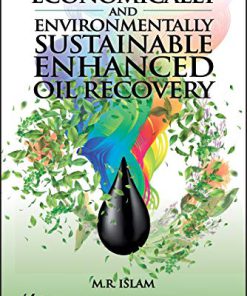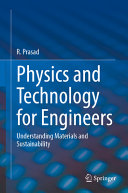Handbook of Assisted and Amendment Enhanced Sustainable Remediation Technology 1st Edition by Majeti Narasimha Vara Prasad ISBN 9781119670360 1119670365
$50.00 Original price was: $50.00.$25.00Current price is: $25.00.
Handbook of Assisted and Amendment Enhanced Sustainable Remediation Technology 1st Edition by Majeti Narasimha Vara Prasad – Ebook PDF Instant Download/Delivery: 9781119670360 ,1119670365
Full download Handbook of Assisted and Amendment Enhanced Sustainable Remediation Technology 1st Edition after payment
Product details:
ISBN 10: 1119670365
ISBN 13: 9781119670360
Author: Majeti Narasimha Vara Prasad
Handbook of Assisted and Amendment Enhanced Sustainable Remediation Technology 1st Edition Table of contents:
Part I: Global Scenario of Remediation and Combined Clean Biofuel Production
1 Global Remediation Industry and Trends
1.1 Introduction
1.2 Global
1.3 Mining in Latin America and Phytoremediation Possibilities
Acknowledgements
References
2 Sustainable Valorization of Biomass: From Assisted Phytoremediation to Green Energy Production
2.1 Introduction
2.2 Bioenergy: The Role of Biomass
2.3 Assisted Phytoremediation: Valorization of Biomass
2.4 Assisted Phytoremediation‐Bioenergy: An Integrated Approach
2.5 Conclusions
References
Part II: Biochar‐Based Soil and Water Remediation
3 Biochar – Production, Properties, and Service to Environmental Protection against Toxic Metals
3.1 Introduction
3.2 How to Produce Biochar
3.3 Biochar Properties
3.4 Biochar in the Service of Environmental Protection
3.5 Soil Characteristics
3.6 Environmental Hazards Caused by Heavy Metals
3.7 Characteristics of Selected Heavy Metals
3.8 Zinc
3.9 Copper
3.10 Lead
3.11 Cadmium
3.12 Soil Pollution
3.13 What Is Remediation and What Is it for?
3.14 Improving Soil Properties
3.15 Removal of Impurities
3.16 The Addition of Biochar to Contaminated Soils may be Such a Solution
3.17 Summary
References
4 Biochar‐based Water Treatment Systems for Clean Water Provision
4.1 Introduction
4.2 Synthesis of Biochar
4.3 Biochar Properties
4.4 Mechanism of Adsorption
4.5 Factors Affecting Adsorption of Contaminants on Biochar
4.6 Biochar‐Based Water Treatment Systems
References
5 Biochar for Wastewater Treatment
5.1 Biochar Production and Its Characteristics
5.2 Modification of Biochar
5.3 Comparison of Biochar with Activated Carbon
5.4 Biochar Adsorption Mechanism
5.5 Adsorption Kinetics of Aqueous‐Phase Organic Compounds
5.6 Influence of pH, Temperature, and Biochar Dose on the Adsorption Process
5.7 Biochar Technology in Wastewater Treatment
5.8 Summary
Acknowledgment
References
6 Biochar for Bioremediation of Toxic Metals
6.1 The Idea of Using Biochar with the Assumption of Closed Circulation
6.2 The Role of Biochar in Soil ‐ General Information
6.3 Biochar as a Sorbent – Physical and Structural Composition
6.4 The Role of Biochar in Removing Heavy Metals from Soil
6.5 Utilization of Selected Heavy Metals from Soil
6.6 Mechanism of Heavy Metals‐Biochar
6.7 Summary
Acknowledgment
References
7 Biochar Assisted Remediation of Toxic Metals and Metalloids
7.1 Introduction
7.2 Biochar and its Remarkable Physical Chemical and Biological Properties
7.3 Heavy Metal Pollutants
7.4 Interactions between Biochar and Heavy Metal
7.5 Biochar as a Bioremediator
7.6 Application of Biochar in Bioremediation of Mining Area
7.7 Limitation of Biochar Amended Bioremediation
7.8 Conclusion
References
8 Use of Biochar as an Amendment for Remediation of Heavy Metal‐Contaminated Soils
8.1 Introduction
8.2 Biochar Production Conditions
8.3 Modification to Improve Remediation Potential of Biochar
8.4 Mechanism of Metal Immobilization by Biochar
8.5 Immobilization of Heavy Metals by Biochar
8.6 Application of Biochar for Immobilization of Heavy Metals and Enhancement of Plant Growth
8.7 Conclusions
References
9 Biochars for Remediation of Recalcitrant Soils to Enhance Agronomic Performance
9.1 Introduction
9.2 Biochar Properties
9.3 Application and Impact of Biochar on Soils
9.4 Conclusions
Acknowledgment
References
10 Biochar Amendment Improves Crop Production in Problematic Soils
10.1 Introduction
10.2 Roles of Biochar in Soil Improvement
10.3 Other Roles of Biochar
10.4 Agricultural Productivity in Biochar Amended Soil
10.5 Reclamation of Degraded Soils Using Biochar
10.6 Conclusions
References
Part III: Organic Amendments Use in Remediation
11 Use of Organic Amendments in Phytoremediation of Metal‐Contaminated Soils: Prospects and Challenges
11.1 Agricultural Organic Waste
11.2 Forestry By‐Products
11.3 Composts
11.4 Sewage Sludge/Biosolids
11.5 Humic Substances
11.6 Biochar
11.7 Constructed Organic‐Derived Soils
11.8 Directions for Future Research
Acknowledgments
References
12 Rice Husk and Wood Derived Charcoal for Remediation of Metal Contaminated Soil
12.1 Introduction
12.2 Heavy Metal Contamination in Soils
12.3 Rice Husk Ash (RHA) – Production, Characteristics, and Application
12.4 Charcoal – Production and Applications
12.5 Conclusion
References
13 Enhanced Composting Using Woody Biomass and Its Application in Wasteland Reclamation
13.1 Introduction
13.2 Composting Process
13.3 Types of Composting
13.4 Woody Biomass Waste as Co‐composting Material
13.5 Advantages and Disadvantages of Composting Woody Biomass
13.6 Application of Woody Biomass Compost in Restoration of Wastelands
13.7 Conclusion
Acknowledgment
References
14 Sewage Sludge as Soil Conditioner and Fertilizer
14.1 Introduction
14.2 Sewage Sludge from Wastewater Treatment Plants
References
15 Sustainable Soil Remediation Using Organic Amendments
15.1 Introduction
15.2 Organic Amendments for Soil Remediation
15.3 Impact of Organic Amendments on Soils
15.4 Potential Risks of the Use of Organic Amendments
15.5 Conclusions
References
Part IV: Advanced Technologies for Remediation of Inorganics and Organics
16 Biosurfactant‐Assisted Bioremediation of Crude Oil/Petroleum Hydrocarbon Contaminated Soil
16.1 Introduction
16.2 Surfactants and Biosurfactants
16.3 Microbial Surfactants
16.4 Types of Biosurfactants
16.5 Optimization of Biosurfactants
16.6 Biosurfactant in Bioremediation
16.7 Challenges and Future Prospectives
16.8 Conclusion
References
17 Advanced Technologies for the Remediation of Pesticide‐Contaminated Soils
17.1 Introduction
17.2 Consumption and Need for Removal
17.3 Remediation Technologies for Pesticidal Contamination
17.4 Conclusion
References
18 Enzymes Assistance in Remediation of Contaminants and Pollutants
18.1 Introduction
18.2 Cyanide Degradation
18.3 Rhizosphere
Acknowledgments
References
19 Thiol Assisted Metal Tolerance in Plants
19.1 Introduction
19.2 Sulfur Metabolism in Plants
19.3 Thiols Induced Metal Tolerance in Plants
19.4 Conclusion
References
20 Biological Remediation of Selenium in Soil and Water
20.1 Introduction
20.2 Sources of Selenium
20.3 Significance in Human Health
20.4 Biological Remediation Processes
20.5 Conclusion
References
Part V: Microbe and Plant Assisted Remediation of Inorganics and Organics
21 Phosphate Solubilizing Bacteria for Soil Sustainability
21.1 Introduction
21.2 Biofertilizer
21.3 Mechanism of P Solubilization
21.4 PSB Help Plant Growth
21.5 Phosphate Solubilizing Bacteria (PSB)
21.6 Soil Sustainability with PSB
References
22 Microbe and Plant‐Assisted Remediation of Organic Xenobiotics
22.1 Introduction
22.2 Impact of PAHs on Environment
22.3 PAHs in Soil and Sediments
22.4 Molecular Weight and Aqueous Solubility
22.5 Plant Assisted Remediation of PAHs
22.6 Plant and Microbe Assisted Remediation – Synergistic Approaches
22.7 Plant–Endophyte Partnership in Phytoremediation
22.8 Conclusions
References
23 Plant Growth‐Promoting Rhizobacteria (PGPR) Assisted Phytoremediation of Inorganic and Organic Contaminants Including Amelioration of Perturbed Marginal Soils
23.1 Introduction
23.2 Plant Growth‐Promoting Rhizobacteria (PGPR): Features and Mechanisms
23.3 Influence of PGPR on Heavy Metals and Hydrocarbons Remediation
23.4 Plant Growth‐Promoting Rhizobacteria to Face Salinity and Drought in Marginal Soils
23.5 Conclusions
References
24 Plant and Microbe Association for Degradation of Xenobiotics Focusing Transgenic Plants
24.1 Introduction
24.2 Xenobiotics in the Environment
24.3 Mechanism of Degradation of Xenobiotics
24.4 Plant and Microbe Association for Degradation of Xenobiotics
24.5 Transgenic Plants and Microbes for the Remediation of Xenobiotics
24.6 Conclusion
References
25 Azolla Farming for Sustainable Environmental Remediation
25.1 Introduction
25.2 Diversity and Ecological Distribution
25.3 Growth Conditions for Optimal Biomass Productivity
25.4 Phytoremediation of Water Bodies
25.5 Prospects in Sustainable Remediation and Bioeconomy
25.6 Outlook
References
26 Mangrove Assisted Remediation and Ecosystem Services
26.1 Mangrove Ecosystems
26.2 Mangrove Plants
26.3 Factors Responsible for Mangrove Degradation and Destruction
26.4 Ecosystem Services of Mangroves
26.5 Methodologies to Use Mangroves for Remediation
26.6 Final Comments
References
Part VI: Nanoscience in Remediation
27 Nanotechnology Assisted Remediation of Polluted Soils
27.1 Soil as Soil of Life
27.2 Soil Pollution
27.3 Impact of Soil Pollution
27.4 Nanopollution
27.5 Soil Remediation
27.6 Future Scope of Nanotechnology in Soil Remediation
References
28 Remediation of Wastewater Using Plant Based Nano Materials
28.1 Introduction
28.2 Materials and Methods
28.3 Results and Discussion
28.4 Conclusion
Acknowledgments
References
Index
People also search for Handbook of Assisted and Amendment Enhanced Sustainable Remediation Technology 1st Edition:
disability handbook aspen professional services
the handbook of design for sustainability
handbook for design
enhanced assisted living residence regulations
environmental law handbook pdf
Tags: Majeti Narasimha Vara Prasad, Assisted, Amendment Enhanced, Sustainable, Remediation Technology
You may also like…
Technique - Nanotechnology
Engineering - Engineering - General & Miscellaneous
Medicine - Others
Engineering - Environmental
Economically and Environmentally Sustainable Enhanced Oil Recovery 1st Edition M. R. Islam
Politics & Philosophy - International Relations
The Routledge Handbook on the International Dimension of Brexit 1st Edition Juan Santos Vara
Engineering - Engineering - General & Miscellaneous
Education & Teaching
Uncategorized











